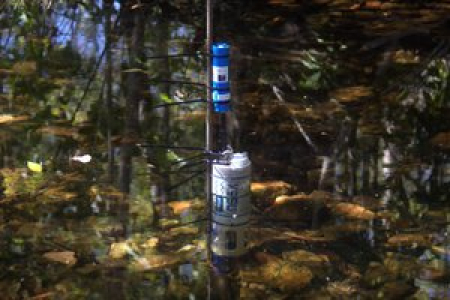Research to protect NT rivers
A research project that is monitoring the aquatic life in the Northern Territory’s iconic Finniss River catchment could improve the management of human impact on river systems across Northern Australia.
Charles Darwin University’s Research Institute for Environment and Livelihoods has set up enclosures in the Finniss River catchment for 40 days to try to establish whether results gained from small-scale sampling and monitoring can be extrapolated to the entire catchment.
Senior Research Fellow Erica Garcia said the project was part of a larger global project in collaboration with research teams in the United States.
“Due to funding and personnel constraints, management agencies typically take water quality samples from a few locations at the small scale,” Dr Garcia said. “They assume that these samples are representative of the whole catchment, which is the scale at which anthropogenic land-use is most likely to occur and management actions are implemented. But no-one has ever checked if this is the case,” she said.
“What we hope to do is to come up with methodology that can be used by managers and stakeholders so they know they are conducting testing, which is representative of the entire river system. They can then ensure that future management is based on robust research.”
The 40-day experiment was created by researchers in the US, who are conducting research across five sites that range in latitudes from Puerto Rico to Alaska. The research by CDU will provide the only tropical location, and could lead to similar research across Australia in the future.
“The results from this study will provide specific information on how ecological measurements in streams can be scaled-up to catchments,” Dr Garcia said. “These experiments will assess how small-scale experiments relate to whole river system processes, and if such experiments scale the same way across diverse biomes and rivers.”
Dr Garcia said the Finniss River catchment in Litchfield National Park was the safest place to conduct the research in Northern Australia due to the difficulties associated with crocodiles elsewhere.
“Once we have an idea of a model for the Finniss, in the near future we hope the design can be used as a basis for comparable rivers systems such as the Daly River, which are being looked at for future development,” she said.
